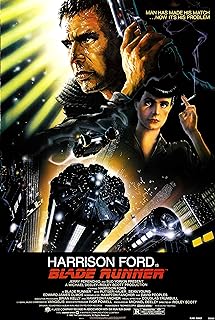
2011-11-10 01:06:34
The Orient in Blade Runner (明天給新生的講稿。。。)
************這篇影評可能有雷************
First, I want to say that this is a wonderful movie that you can develop on it as many topics as you want. We can talk about the presentation of Orient; we can talk about the female nude (the one transparent cloth), we can give a feminist critique on Rick Deckard and the movie itself in terms of their attitude toward women in the movie; We can also talk about commercialism in the movie, we can talk about humans as prisoners in the movie and about intertexuality of the movie itself. What I want to do is to choose the ideas that have the possibility to cooperate with each other and finally lead to your thesis.
I want to choose the first one: the presentation of Orient in the movie. This topic consists of a couple of questions: which definition of Orient I want to use, how was the Orient presented in the movie, and finally who invested money into the movie? The process of answering these questions is a process of proving my thesis. And my thesis is that the presentation of the Orient in this movie is a strategy of a company that locates outside of the Orient to win the market of the place from where the Orient is produced.
The first question: what does Orient mean? I use Edward Said’s definition of the Orient, which is, briefly, a world that has been imagined and invested by the West in order to control it. In the movie, there are many scenes that reveal symbols of the Orient. Here are some examples, Japan as the set-up, the mysterious music, the eye-maker who speaks Cantonese and Mandrin, the Noodle seller who speaks English and Japanese, and most importantly, the Egyptian who creates snakes and the Salome who plays with snakes. All of these are exotic and mysterious, not understandable by reason. Yet, these exotic and mysterious scenes attract people who cannot understand them. Up to now, I am saying that this is a movie about the Orient shown to the creator of the Orient. This is only the first layer of the story.
If we ask one more question on what we have found out, we will find that the idea we got just now is quite simple and even superficial. The second question is: who invested the movie? Or who put money in this movie? A Hongong cinema company called Shaw’s did this. In other words, this is a Hongkong film directed to the U.S. market. Now, why is this interesting? Because, according to Said and many other postcolonial critics, the Orient is a projection of the West for imperialist reasons. However, the film suggests that in the era of commercialism, the Orient becomes product of companies particularly made for the creator of the Orient. In these sense, what we usually call the creator of the Orient becomes the consumer of the Orient, who, according to media theorists and popular culture critics, are absent-minded and non productive. The commercialism therefore totally enslaves the creator of the Orient.
The topic can be even more complicated if we ask another question, which is, what kind of position does the Shaw’s company identify with? Is it a company that identifies with the British colonizers, or is it a company that identify with the colonial history of Konghong, or, does it care about identity at all? Each different answer to these questions will lead to a completely different conclusion of the thesis. But the outline of the thesis would be, as I said in the beginning, the Orient has become mass produced product to help the company make the most benefits from its target market.

